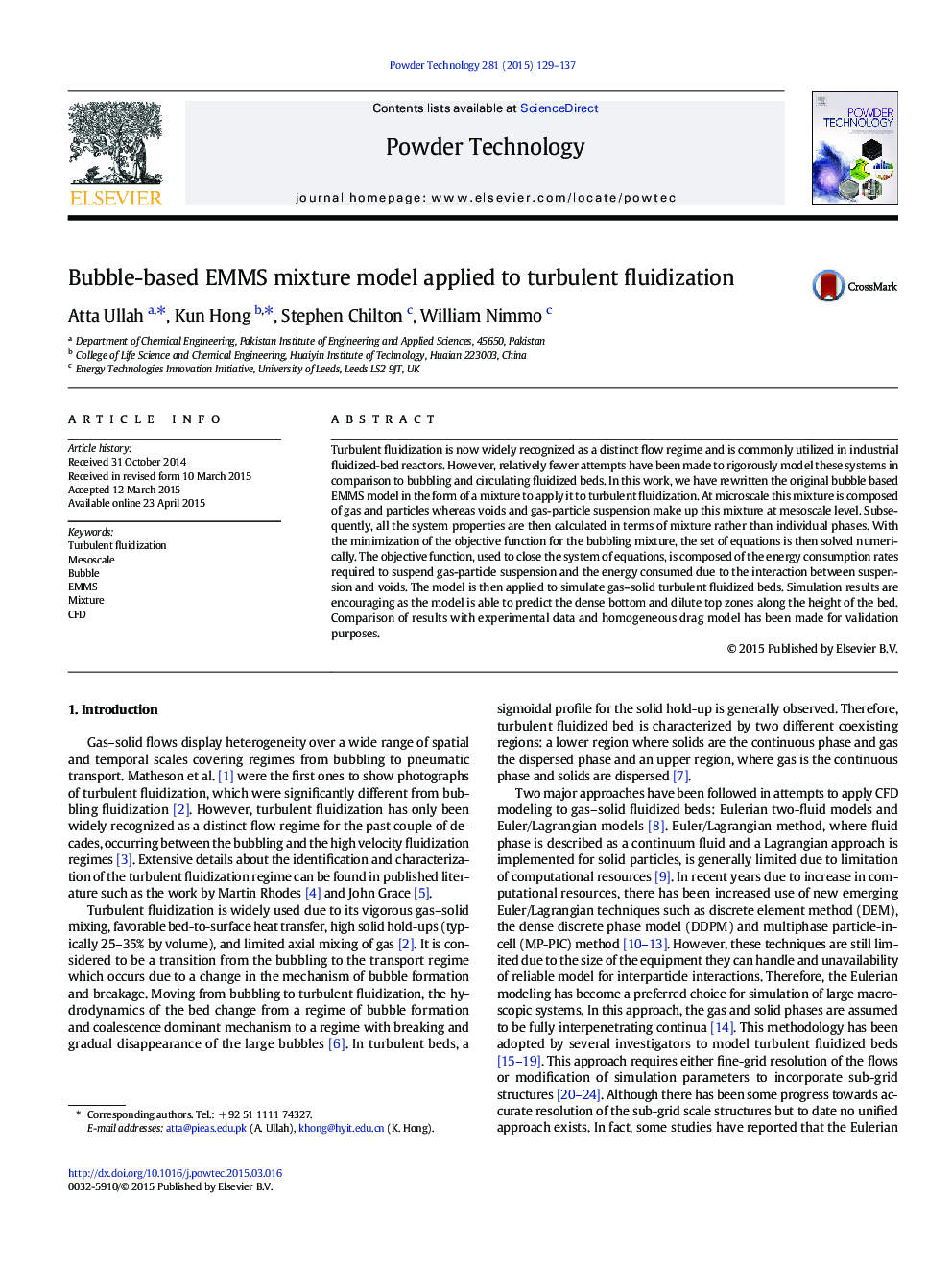| Article ID | Journal | Published Year | Pages | File Type |
|---|---|---|---|---|
| 235467 | Powder Technology | 2015 | 9 Pages |
•Bubble based EMMS mixture model is suitable for simulation of turbulent fluidized beds.•Partial slip wall boundary condition with EMMS model predicts better voidage profiles.•The drag correction required for accurate simulation reduces with increasing Archimedes number.
Turbulent fluidization is now widely recognized as a distinct flow regime and is commonly utilized in industrial fluidized-bed reactors. However, relatively fewer attempts have been made to rigorously model these systems in comparison to bubbling and circulating fluidized beds. In this work, we have rewritten the original bubble based EMMS model in the form of a mixture to apply it to turbulent fluidization. At microscale this mixture is composed of gas and particles whereas voids and gas-particle suspension make up this mixture at mesoscale level. Subsequently, all the system properties are then calculated in terms of mixture rather than individual phases. With the minimization of the objective function for the bubbling mixture, the set of equations is then solved numerically. The objective function, used to close the system of equations, is composed of the energy consumption rates required to suspend gas-particle suspension and the energy consumed due to the interaction between suspension and voids. The model is then applied to simulate gas–solid turbulent fluidized beds. Simulation results are encouraging as the model is able to predict the dense bottom and dilute top zones along the height of the bed. Comparison of results with experimental data and homogeneous drag model has been made for validation purposes.
Graphical abstractFigure optionsDownload full-size imageDownload as PowerPoint slide
